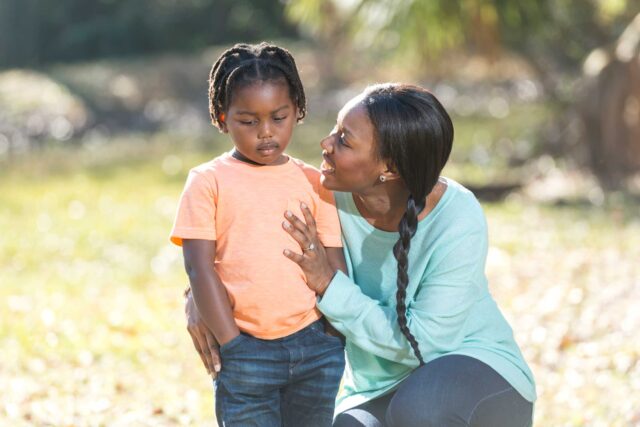As protests continue from coast to coast in light of police brutality, more and more families are talking to their children about racism. This is an important conversation that parents should unquestionably have with their children; however, “the talk” is not always an easy one. Many times, parents find themselves grasping for just the right words to say.

Many times, parents find themselves grasping for just the right words to say.

Babies, even as early as six months, notice physical differences, including skin color. As early as five-years-old, children can show signs of racial bias. Therefore, it is never too early to start educating children about racism. If they are not prepared to understand what is going on in the world around them, that lack of knowledge could impact them in the long run as well as damage their overall well-being and safety.
In a recent article on Unicef.org, the experts weigh in, by age level, with tips on how to have “the talk” because “being silent is not an option.”
Five Years and Under
1. Recognize and celebrate differences – If your child asks about someone’s skin color, and they will, use the moment as a teachable moment and acknowledge that people do indeed look different, but point out that we also have many things in common.
2. Be open – Avoid telling them to “shush,” when they openly express skin color differences. Let them know that this is not a taboo topic, but a reality.
3. Use fairness – Talk about racism as unfair and unacceptable.
Six to 11
1. Be curious – Listen and ask question together. It is important to find out what they already know and how they feel.
2. Discuss the media together – Social media is a big part of daily life. Find out what they are reading, what conversations they are involved in online, and find opportunities to explore examples of stereotypes and racial bias to discuss.
3. Talk openly – Real talk is unquestionably worth its weight in told. Have honest and open conversations about racism, diversity, and inclusivity. Give them real examples, maybe even some from your own experiences.

12+ years
1. Know what they know – Find out what your children know about racism and discrimination. Be involved in their information flow.
2. Ask questions – Ask what they think about recent events. Create a dialogue while introducing them to different perspectives to help expand their understanding.
3. Encourage action – Encourage children to be active and engage in racial activism. Their voice may just be the one that will bring about change for all.







